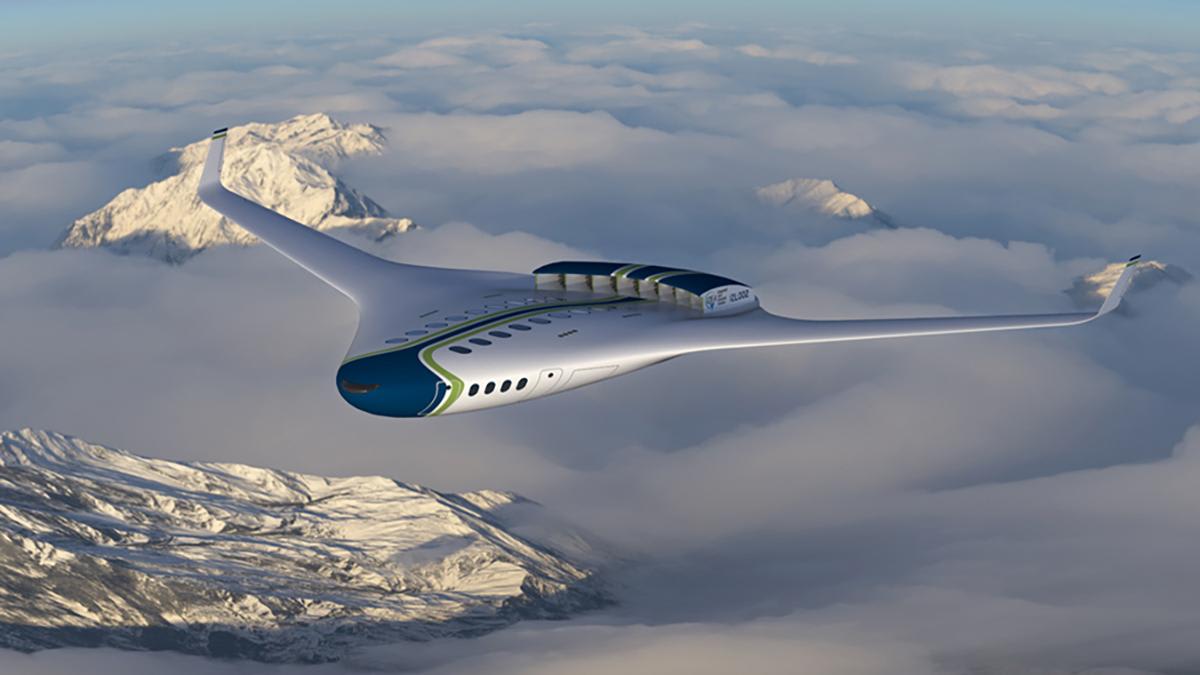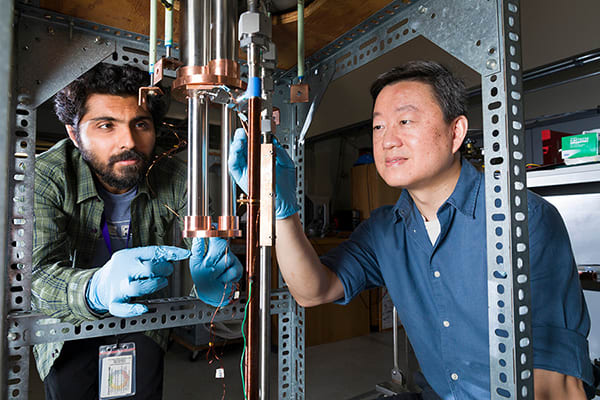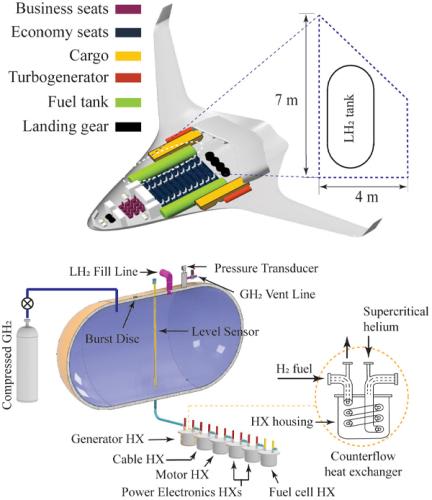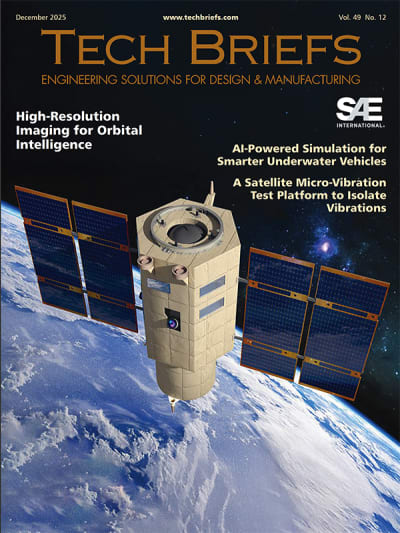
Researchers at the FAMU-FSU College of Engineering have engineered a practical liquid hydrogen storage and delivery system that brings zero-emission aviation significantly closer to reality. Their innovative design addresses multiple engineering challenges simultaneously, enabling hydrogen to serve as both a clean fuel and an integrated cooling medium for critical power systems in next-generation electric aircraft.
The comprehensive study, published in Applied Energy, introduces a scalable system specifically designed for 100-passenger hybrid-electric aircraft. The new design integrates hydrogen fuel cells with hydrogen turbine-driven superconducting generators, demonstrating how liquid hydrogen can be efficiently stored, safely transferred, and strategically used to cool onboard systems during all flight phases.
“Our goal was to create a single system that handles multiple critical tasks: fuel storage, cooling, and delivery control,” said Corresponding Author Wei Guo, Professor in the joint college’s Department of Mechanical Engineering. “This design lays the foundation for real-world hydrogen aviation systems.”

Hydrogen emerges as aviation’s most promising clean fuel alternative, packing more energy per kilogram than conventional jet fuel while producing zero carbon dioxide emissions. However, its ultra-low density requires storage as a super-cold liquid at –253 °C, presenting significant engineering challenges for aircraft applications.
The FAMU-FSU team tackled this challenge through comprehensive system-level optimization, developing an innovative approach that goes beyond traditional tank design. They introduced a new gravimetric index — the ratio of fuel mass to total fuel system mass — that accounts for all system components including hydrogen fuel, tank structure, insulation, heat exchangers, circulation devices, and working fluids.
Here is an exclusive Tech Briefs interview, edited for length and clarity, with Guo.
Tech Briefs: What was the biggest technical challenge you faced while developing this liquid hydrogen storage and delivery system?
Guo: The biggest technical challenge was designing a system that could simultaneously serve as an efficient hydrogen fuel delivery mechanism and a thermal management system for onboard power electronics — all within the mass and space constraints of an aircraft. Liquid hydrogen (LH₂) must remain at cryogenic temperatures to stay in liquid form, and managing its flow and thermal load without using mechanical pumps (which are heavy, complex, and failure-prone at such low temperatures) was particularly demanding. Our solution — regulating the flow solely through tank pressure control — had to be engineered to be responsive, reliable, and capable of delivering up to 0.25 kg/s of hydrogen during peak demand. Equally important, the system had to manage heat loads from multiple power system components operating across a wide range of temperatures, all without compromising the hydrogen flow rate needed to meet the aircraft’s power requirements
Tech Briefs: Can you explain in simple terms how it works?
Guo: Certainly. The system stores liquid hydrogen in cryogenic tanks aboard the aircraft. Instead of using pumps, we precisely regulate the tank pressure to drive the hydrogen through a series of heat exchangers. As the hydrogen flows, it absorbs waste heat from various power components — such as superconducting motors, cables, and electronics — gradually warming to the optimal temperature for energy conversion by the time it reaches the fuel cells or turbines. What’s critical here is that we presented a design that is not just conceptual, but viable, and we demonstrated how to optimize it through comprehensive system-level analysis. In doing so, we showed that hydrogen can simultaneously serve as both a fuel and a coolant — all within a single, integrated, and mass-efficient architecture.

Tech Briefs: How does it differ from prior liquid hydrogen storage/delivery methods?
Guo: Traditional LH₂ systems typically rely on mechanical pumps or cryofans to move hydrogen and manage heat. These introduce extra mass, potential failure points, and design complexity — especially in a cryogenic environment. Our approach eliminates those components entirely. Instead, we use internal tank pressure (controlled via hydrogen injection and vapor venting) to drive the flow. In addition, most previous designs treat storage and thermal management as separate systems. Our innovation is the integration of both into a single, optimized system that maximizes efficiency and minimizes hardware burden. We also introduced a new “system-level gravimetric index” to guide the optimization — a broader metric that accounts for the mass of all supporting subsystems.
Tech Briefs: Do you have any set plans for further research or next steps?
Guo: Yes, absolutely. The next phase is experimental validation. We plan to build a prototype of the integrated tank and heat exchanger system and test it at FSU’s Center for Advanced Power Systems. This will involve not only thermal and flow performance testing but also pressure control and safety validation. Long-term, we’re also exploring integration with other subsystems such as electric propulsion and fuel cell stacks, and scaling the system for different aircraft sizes and mission profiles.
Tech Briefs: Is there anything else you’d like to add that I didn’t touch upon?
Guo: One important point is that while our current design is optimized for regional hybrid-electric aircraft, the architecture is scalable. That means similar design principles can be adapted for larger, long-range aircraft as the technology matures. Also, beyond aviation, this type of integrated LH₂ system could find applications in space missions, marine transport, and even stationary power systems requiring high-efficiency cryogenic cooling and energy storage.
Tech Briefs: Do you have any advice for researchers aiming to bring their ideas to fruition (broadly speaking)?
Guo: I’d say: Think holistically, and collaborate across disciplines. Many of the most challenging problems — like decarbonizing aviation — don’t fit neatly into a single field. This project wouldn’t have been possible without close collaboration between experts in cryogenics, aerospace, electrical engineering, and materials science. Also, it’s important to balance ambition with feasibility: our work has come from building a realistic, system-level design that addresses known constraints from the outset.

